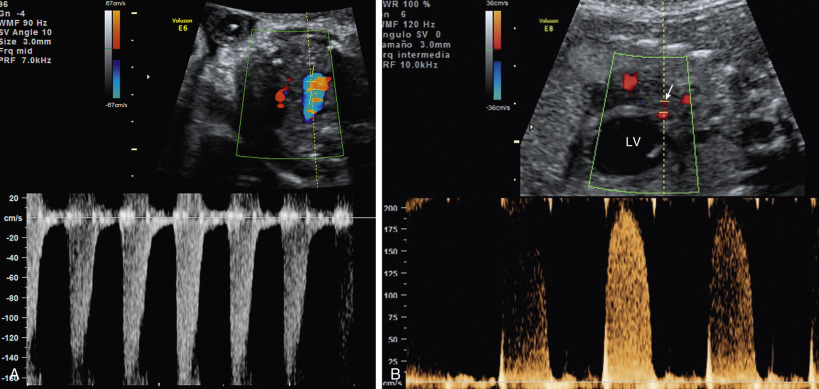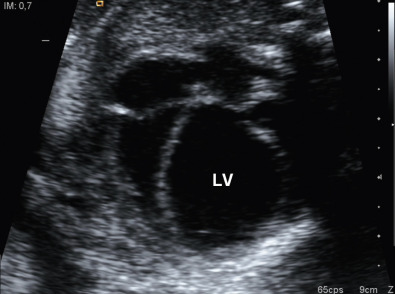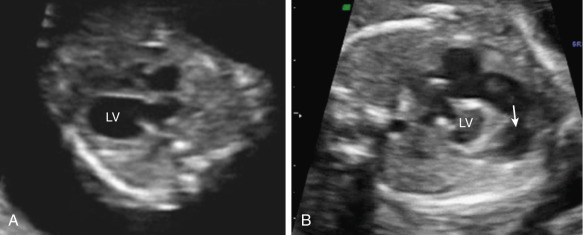Abstract
Aortic stenosis and atresia encompass a group of congenital heart diseases (CHDs) characterized by left outflow tract obstruction. It accounts for 3% of all CHDs. There is a 15% recurrence risk, one of the highest regarding CHD. It has a low association to chromosomal and extracardiac anomalies. It can progress to hypoplastic left heart syndrome. Fetal aortic valvuloplasty can be offered in selected cases in order to avoid hypoplastic left heart syndrome progression. Delivery should be planned in a tertiary referral center with cardiac surgery. Prognosis depends on the severity of the stenosis and left ventricle function at birth.
Keywords
congenital heart defect, left ventricle tract obstruction, aortic stenosis, aortic atresia
Disease
Definition
AS and aortic atresia encompass a group of congenital heart diseases (CHDs) characterized by left ventricular outflow tract obstruction. Depending on the level of the defect, these are classified as supravalvular, valvular, or subaortic obstruction. Valvular stenosis is the most frequently found form in the fetus.
Prevalence and Epidemiology
AS accounts for 3% of all CHDs. There is a 15% recurrence risk, one of the highest among all forms of CHD.
Etiology and Pathophysiology
The etiology is multifactorial. Autosomal dominant and recessive inheritance forms have been reported. Subvalvular forms have been associated with hypertrophic myocardiopathy and maternal diabetes.
Aortic atresia is frequently associated with mitral atresia in the context of hypoplastic left heart syndrome (HLHS) ( Chapter 81 ). Isolated aortic atresia is uncommon. If present, it is characterized by fused or dysplastic valve leaflets, and the aortic valve can be bicuspid, monocuspid, or quadricuspid.
Clinical and ultrasound (US) manifestations depend on the severity of the obstruction and the functionality of the mitral valve.
- •
Mild AS is associated with an increased pressure of the left ventricle outflow tract without ventricular dysfunction. Color Doppler evaluation is the key for diagnosing this form of AS ( Fig. 80.1 ), showing an acceleration and aliasing of the blood flow through the aortic valve. Pulsed Doppler will identify postvalvular acceleration with high peak velocities in the outflow tract. It is frequently overlooked prenatally.

Fig. 80.1
(A) Mild aortic stenosis. Aliasing flow is identified and high postvalvular velocities confirmed by means of pulsed Doppler. (B) Color Doppler evaluation of a globular left ventricle (LV) outflow tract in critical aortic stenosis: aliasing (arrow) through the aortic valve and blood flow acceleration are identified.
- •
Progressive obstruction leads to left ventricular hypertrophy to overcome the high left ventricular outflow tract pressure.
- •
Severe and prolonged obstruction causes myocardial ischemia and left ventricular dysfunction. Chronic myocardial stress results in proliferation of elastic and collagenous fibers, causing diffuse thickening of the endocardium and endocardial fibroelastosis ( Fig. 80.2 ).

Fig. 80.2
Globular left ventricle (LV) occupying the cardiac apex. Echogenic left ventricle internal walls suggest endocardial fibroelastosis.
- •
Chronic critical AS and aortic atresia can progress to severe hypoplasia of the left ventricle ( Fig. 80.3 ).











